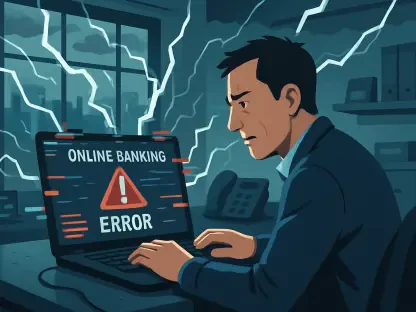In an era where digital transactions dominate, the persistence of check fraud as a significant threat to the financial sector is both surprising and alarming, with losses mounting into billions annually. A recent case involving a former Truist bank employee, sentenced for orchestrating a nearly $400,000 check fraud scheme, serves as a stark reminder of the vulnerabilities still present in traditional banking systems. This analysis delves into the specifics of this sophisticated conspiracy, examines its broader implications for market trends, and explores how such incidents shape the future of fraud prevention strategies. By dissecting the mechanics of this crime and contextualizing it within industry patterns, the goal is to provide actionable insights for financial institutions, regulators, and stakeholders navigating an increasingly complex risk landscape. This examination is critical as check fraud incidents continue to rise, demanding urgent attention to safeguard trust and stability in banking operations.
Diving into Market Trends and Fraud Dynamics
The Persistent Plague of Check Fraud in Banking
Despite a notable decline in check usage over recent years, the incidence of check fraud has surged, creating a paradoxical challenge for the financial industry. Data from the Federal Reserve Bank of Atlanta highlights a nearly fourfold increase in such incidents since the global health crisis, even as check processing volume dropped significantly. This trend reveals a shift in criminal tactics, where fewer transactions are exploited with greater sophistication, often leveraging insider access and stolen data. The Truist case, involving a complex network of conspirators, exemplifies how fraudsters adapt to systemic gaps, posing a persistent threat to banks that costs the sector billions each year. Financial institutions now face mounting pressure to enhance security protocols without compromising operational efficiency, a balancing act that remains elusive.
Dissecting the Truist Conspiracy: A Microcosm of Market Risks
The Truist fraud scheme, which spanned from late 2021 to the end of 2022, offers a detailed lens into the vulnerabilities that plague modern banking. A former employee, central to the operation, abused internal access at a Truist branch to facilitate the deposit and withdrawal of counterfeit checks, resulting in losses of $390,475.84. This insider betrayal, coupled with a network of seven accomplices who forged checks using stolen mail data and recruited account holders for illicit transactions, underscores the multi-layered nature of contemporary financial crimes. Such cases highlight a critical market risk: the reliance on employee trust without adequate oversight. As similar schemes proliferate, they expose systemic weaknesses that demand innovative solutions to protect assets and maintain customer confidence.
Rising Sophistication: Criminal Networks and Industry Impact
Beyond individual cases, the Truist incident reflects a broader market trend of increasing criminal sophistication, where organized networks exploit both technological and human vulnerabilities. The conspirators’ use of stolen postal data to create counterfeit checks, combined with coordinated recruitment efforts to open fraudulent accounts, demonstrates a level of planning that challenges traditional fraud detection methods. Evidence of their audacity, such as custom jewelry symbolizing their ill-gotten gains, further illustrates a cultural mindset that normalizes such crimes. This growing complexity impacts not just financial losses but also erodes public trust in banking systems, pushing the industry toward adopting advanced analytics and real-time monitoring to stay ahead of evolving threats.
Projecting Future Challenges and Market Responses
Escalating Threats in a Digital-First Era
Looking ahead, the financial sector braces for escalating challenges as check fraud adapts to a digital-first landscape, even as paper transactions wane. Federal Reserve insights point to a substantial rise in such incidents, driven by tactics that may soon incorporate artificial intelligence to generate counterfeit instruments or enhance data theft. Projections suggest that without robust interventions, losses could continue to climb, straining resources and regulatory frameworks. From 2025 to 2027, the industry anticipates a critical window to implement stricter guidelines and invest in cutting-edge fraud detection systems. These emerging threats underscore the need for proactive measures to address vulnerabilities before they are exploited at scale.
Strategic Innovations to Combat Fraud
In response to these projections, market players are pivoting toward innovative solutions to mitigate risks associated with check fraud. Banks are exploring multi-factor authentication for high-value transactions and integrating machine learning algorithms to detect anomalies in real time. Employee training programs are also gaining traction, aimed at identifying red flags and preventing insider collusion, a factor central to schemes like the one at Truist. Additionally, collaboration between financial institutions, law enforcement, and policymakers is becoming a cornerstone of fraud prevention strategies. These efforts, if scaled effectively, could redefine how the sector safeguards against financial crimes, setting a precedent for resilience in an era of rapid technological change.
Balancing Cost and Security in Market Strategies
A key consideration for the future lies in balancing the cost of implementing advanced security measures with the need to maintain competitive service delivery. Smaller banks, in particular, may struggle to allocate budgets for sophisticated fraud detection tools, potentially widening the gap between large and regional institutions in terms of risk exposure. Market analysis suggests that shared technology platforms or industry-wide partnerships could offer a cost-effective path forward, enabling broader access to cutting-edge solutions. This balance will be pivotal in shaping how the sector evolves, ensuring that security enhancements do not hinder accessibility or customer experience while addressing the persistent threat of fraud.
Reflecting on Insights and Charting Strategic Paths
Looking back, the detailed examination of the Truist check fraud scheme, coupled with broader market trends, reveals a financial landscape grappling with sophisticated criminal networks and systemic vulnerabilities. The staggering loss of nearly $400,000 in a single case underscores the devastating impact of insider involvement and organized crime on banking stability. As the industry reflects on these findings, the rise in check fraud despite declining usage emerges as a critical signal of evolving threats that demand urgent attention. Moving forward, strategic paths crystallize around robust investments in technology, such as real-time fraud detection and AI-driven analytics, to preempt future risks. Collaborative frameworks between banks and regulators also stand out as essential for dismantling complex schemes. Ultimately, the lessons from this analysis point toward a future where vigilance and innovation become non-negotiable pillars for safeguarding trust and fortifying the financial sector against persistent and adaptive crimes.









